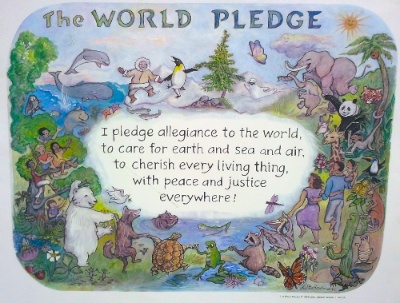Every journey starts with a single step. This activity is a great way to open a dialogue about conflict with any group of any age. Exploring perceptions about conflict offers a rich springboard for other activities found in the calendar and in the web resources listed throughout.
1. Write “conflict” on the board and ask the group if they know what that word means. (If they need help, explain that it is disagreement and give a few age-appropriate examples.)
2. Ask the class: What do you think of when you hear the word “conflict”?
3. Have the class brainstorm all the associations they have with the word “conflict”. List their ideas on the board or create a web chart.
4. Conduct a class discussion using the following questions:
- Which words are negative? Which are positive? Which are neutral?
- Why do you think there are more negative words about conflict than positive or neutral ones?
- Describe a conflict you’ve had. Would you say it was positive or negative?
- Can anyone describe a conflict that ended in a positive way (where everyone involved felt good at the end or things changed for the better as a result)?




